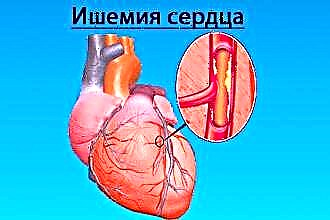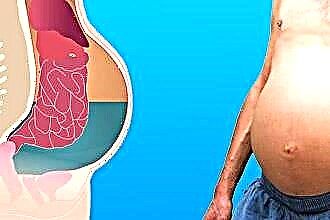It is possible to diagnose pathological changes in the structure of the heart using modern methods. An electrocardiogram is recognized as one of the most effective. A direct indication for this examination can be a pronounced clinical picture of a patient's life-threatening condition, when a person feels constant heart failure, as well as pain in the region of the organ. A timely response is important not only for doctors, but also for the patients themselves. Multiple diseases that develop due to impaired blood flow in the body are often the cause of death.
Features of pathology
Left ventricular enlargement: what is it? This is a complex and dangerous pathology that clearly requires medical treatment. The disease develops as a result of other dysfunctions of some organs, including the heart. Any interventions by doctors are carried out only on the basis of the results of a thorough diagnosis of the patient's health.
 According to statistics, almost four percent of patients with this diagnosis die. The likelihood of a lethal outcome increases when the dangerous symptoms are ignored and the patients themselves do not accept the importance of this factor. What is it and why is it worth paying close attention to the signs of the disease? Doctors emphasize that the risk group consists of patients with hypertension. High blood pressure is most often the result of changes in the size of the left ventricle.
According to statistics, almost four percent of patients with this diagnosis die. The likelihood of a lethal outcome increases when the dangerous symptoms are ignored and the patients themselves do not accept the importance of this factor. What is it and why is it worth paying close attention to the signs of the disease? Doctors emphasize that the risk group consists of patients with hypertension. High blood pressure is most often the result of changes in the size of the left ventricle.
The norm is considered to be the thickness of its walls 11-14 mm., And the volume up to 210 cm3. This organ contracts blood and helps push it into the aorta. Violation of this function leads to a deterioration in blood circulation in the large circle, which begins precisely with the left ventricle. An uneven flow of blood to the liver, kidneys, brain, limbs and stomach provokes a disruption in the activity of these organs.
Often, the patient begins to develop complex diseases, the treatment of which must begin precisely with the restoration of normal blood circulation.
The left ventricle is enlarged due to the thickening of the wall.
The process can manifest itself uniformly or localized. Cardiologists subdivide the development of pathology in two directions:
- The concentric type is characterized by a thickening of the walls of the ventricle due to functional pressure.
- Eccentric type, it is determined with a volume load.
Doctors do not attribute left ventricular enlargement to a disease, considering it a specific abnormal abnormality. As a result of many years of research, it was revealed that with long-standing defects, not only the left ventricle, but also the atrium can increase. Less commonly, hypertrophy affects the entire heart.
Provoking factors
An increase in the left ventricle of the heart can be the result of not one cause, but a whole set of provoking factors. The age of the patient, hereditary characteristics, body weight and living conditions matter. In exceptional cases, an increase in the ventricle can be defined as a variant of the norm. It happens during physical exertion, during the period of bearing a child, less often during puberty.
Significant changes, in any case, are considered a pathological process. The leading causes affecting the size of the ventricle are as follows:
- Congenital heart defects. The formation of negative changes in the work of the organ occurs during pregnancy. Extensive lesions cause immediate heart failure. An increase in the left ventricle is diagnosed, with this development of events, already in the first months of a newborn's life.
- Diseases of an inflammatory nature. The main ones are myo-, endo- and pericarditis. The risk group is made up of children and adolescents, and the pathology develops in chronic diseases of this type. Dilated myopathy is also dangerous.
- Acquired heart defects. Affects patients of the adult group. They often develop as a result of rheumatism.
- Pathology of the cardiovascular orientation of the chronic course. These include arterial hypertension, myocardial ischemia, angina pectoris and others.
- Chronic lung disease.
- Metabolic syndrome, which is based on obesity in combination with diabetes mellitus.
- Pathological problems with the functioning of the kidneys, liver, hematopoietic system, hyperthyroidism.
 It is important to know that any negative processes in the human body can lead to an increase in the left ventricle of the heart. The unnatural state of chronic disease causes heart failure. The formation of pathology with constant emotional stress of a negative nature is not excluded.
It is important to know that any negative processes in the human body can lead to an increase in the left ventricle of the heart. The unnatural state of chronic disease causes heart failure. The formation of pathology with constant emotional stress of a negative nature is not excluded.
Symptoms
At the initial stage of the development of pathology, the patient, as a rule, does not notice dangerous signs.
Symptoms begin to appear when the left ventricle is already significantly enlarged. Cardiologists recommend paying attention to the following changes:
- chest pain;
- sudden fainting;
- dyspnea;
- fast fatiguability;
- cardiopalmus;
- dizziness.
A patient can live with an enlarged ventricle for more than one year, without feeling any special health problems. However, a sharp increase in the ventricle, which is possible at any stage, provokes sudden angina pectoris, atrial fibrillation. General health worsens, sleep is disturbed. Nosebleeds can be accompanied by an increase in blood pressure, which means there is a high likelihood of a change in size.
Consequences
Untimely treatment and neglect of dangerous symptoms can have irreversible consequences for the structure of the heart. Even a slight increase causes the development of a complex pathology, leading to an increase in pressure inside the organ. The affected tissues constrict blood vessels, as a result of this, blood flow directly to the heart muscle itself is limited.
In a situation where the heart is enlarged to the left, a number of complications develop:
- Absolute blockage of blood flow through the vessels and heart.

- Loss of the heart's ability to fully pump blood throughout the body in an amount corresponding to the norm (heart failure).
- Heart rhythm irregularities (various arrhythmias).
- Intermittent rapid heartbeat (atrial fibrillation).
- Impaired oxygen supply to the heart (ischemia).
- Stroke.
- Significant expansion of the tissues of the aorta (aortic pathology).
- Loss of consciousness, which can be repeated several times.
- Sudden heart failure (sudden cardiac arrest).
It should be noted that ventricular hypertrophy leads to significant impairment of the heart. The development of the disease, regardless of the reasons, catastrophically worsens the state of health, and an appeal to a cardiologist is simply a vital necessity. Average statistics indicate that this heart ailment can provoke complications with an overly active lifestyle.
One of the most important factors in identifying pathological processes affecting the heart is the patient's history of the patient's lifestyle and the presence of chronic diseases.
A hereditary predisposition plays a special role in enlarging the left ventricle of the heart.
Doctors recommend not to lose sight of the risk of genetically transmitted cardiovascular diseases.This will help not only to pay attention to dangerous symptoms in a timely manner, but also to quickly diagnose any violations, thereby avoiding a possible heart attack or sudden cardiac arrest.




